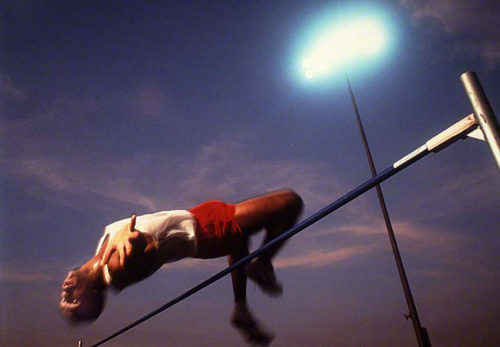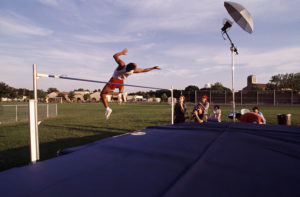Every time I post an image in this category it takes me back to a time when life was so much simpler: no computers, no internet, no texting from your kids and we actually wrote letters and called one another on a princess phone.
One of many things that wasn’t simpler was creating photos in the camera; one click, one exposure. I will invariably have this conversation with students that take my online class with the BPSOP and the ones that take my “Stretching Your Frame of Mind” workshops I conduct around the planet.
These fellow photographers grew up in the digital era where everything is fixable and can be created just by sitting down in front of a computer. They are dumbstruck when I show them my “Life Before Photoshop” PowerPoint presentation, and can’t believe that at one time Adobe was known only as a type of house in the Southwest.
I’m not crying and saying that we had it much tougher without the help of Lightroom and Photoshop, although we did. I have no problem with either software because I use them everyday to some extent. I’m saying that in those days you had to do your own thinking and not let a camera and a computer do it for you.
I shot a campaign for Russel Athletics, and among several other photos taken in that campaign, the idea was to capture the athlete during the sport he or she was involved in.
In the above photo I wanted to show motion while at the same time freeze it; easier said than done in those days. I used one 2400WS electronic strobe with the head bouncing off a white umbrella.
In those days I used a Minolta One-Degree spot meter and took a reflected reading off his face. I then took another reflected reading off the sky behind him.
Since I couldn’t control the exposure of the sky (other than wait until it got darker), I could control the exposure on the athlete. I dialed down the exposure of the flash on his face until it matched the exposure reflecting off the sky. At that point I knew what I was going to get…how you ask?
Because I had a man in NY designed a Polaroid that fit on the back of my Nikon motor drive. I could pull a 35mm”roid” and check it out before going to film…which was, btw, Kodachrome 25…as in an ISO of 25.
To get the slight blur, I used what was called back then a “sync delay”…let me explain further:
If I were to use a regular flash the flash would have gone off at the beginning of the shutter opening. By using a delay the flash fired at the end of the exposure, and if my shutter speed was slow enough it would record the feeling of motion while freezing the action a the same time with the flash.
This could be achieved so much easier while sitting in front of a computer, but not nearly as fun and challenging.
Visit my website at: www.joebaraban.com, and check out my workshop schedule at the top of this blog. Come shoot with me some time. This coming January Along with William Yu, I’ll be taking a group to China to photograph the flooded rice terraces and also the tribal villages. Next February in conjunction with the Santa Fe Workshops, I’ll be returning to Cuba for the fourth time. My next springtime workshop will Berlin next May; an incredibly beautiful city.
Send me a photo and question to:AskJoeB@gmail.com, and I’ll create a video critique for you.
JoeB






